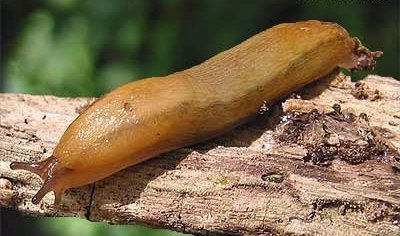The European slug, while seemingly unassuming in appearance, has become the inspiration for a new adhesive that can be used in surgery and wound healing.
The slug, Arion subfuscus, has the unique ability to glue itself to wet surfaces when threatened or frightened, doing so while remaining pliable. Scientists at Harvard’s Wyss Institute for Biologically Inspired Engineering decided to imitate that trait, NPR reports.
Jianyu Li, a materials scientist, said in reference to the slug’s traits,
That’s a very challenging problem in the material and also in the biomedical world. Those represent the biggest challenge in terms of adhesive development.
Li had been doing research on how to make better surgical adhesive, particularly one that could repair delicate organs without damaging stitches or staples, or causing air or fluid leaks.
Usually, there’s a compromise between stickiness and flexibility, Li said. Super Glue, for instance, works very well on dry surfaces, but since it’s rigid and is made of toxic ingredients, it would never work for patching a human heart. Other materials that are flexible are not very sticky.
When the Dusky Arion slug gets scared, an extra-sticky slime is secreted from its skin. This goo is sticky enough that if a bird tried to pry the slug off a twig, it would have difficulty doing so, Li explained – like gum stuck to the bottom of a shoe.
Li said, “The defensive mucus turns out to be very sticky and also very strong and highly stretchable. That kind of inspired us.”
He and colleagues used the slug slime as their focal point in engineering a new adhesive that combines ingredients similar to that in the slug slime with a flexible gel.
The slug slime can stick to surfaces in three different ways, which Li and the team tried to mimic. The result was a sticky super glue that is more stretchable than a rubber band, works on wet surfaces, and is not toxic to humans. Li said this material can stick on organs as well as cartilage does to bone.
When tried on animals, the gel patches they created successfully stuck to bloody pig skin and to a bloody, beating pig heart. It was also able to patch holes in rat livers, and remained sticky for two weeks. When injected in a pig heart, it sealed a hole and withstood expansion. In a 24-hour test on human cells, the adhesive did not cause any damage.
This patch would still need years of testing before it can be used on humans, but Li and the other researchers are already working to create a biodegradable version that might melt away on its own once an organ is healed.
The study was published in the journal Science.
























